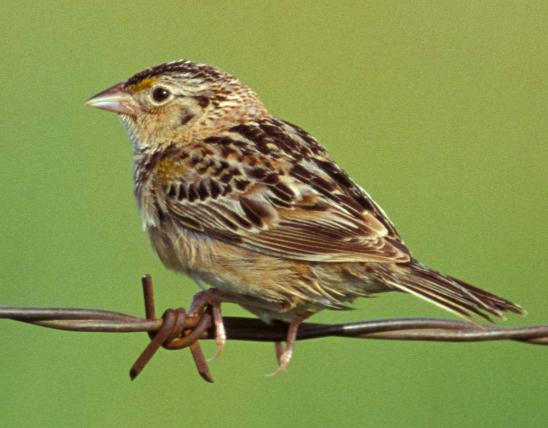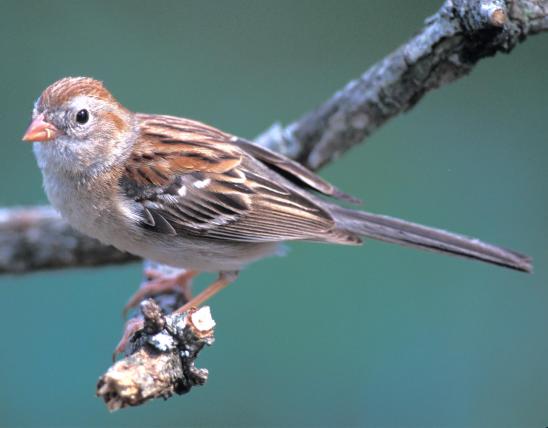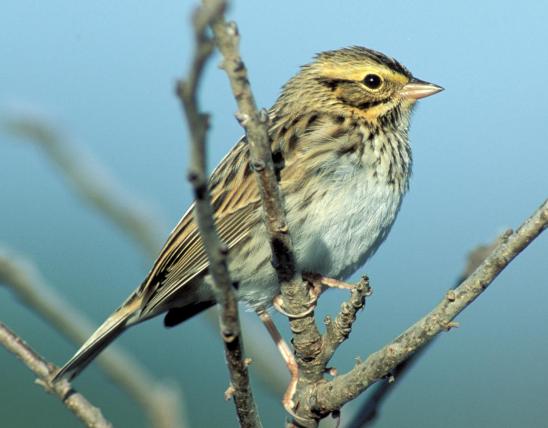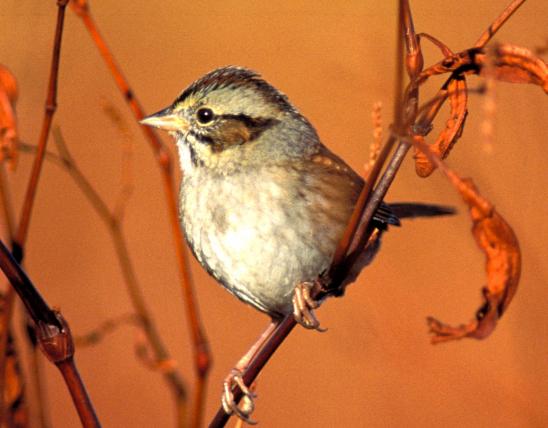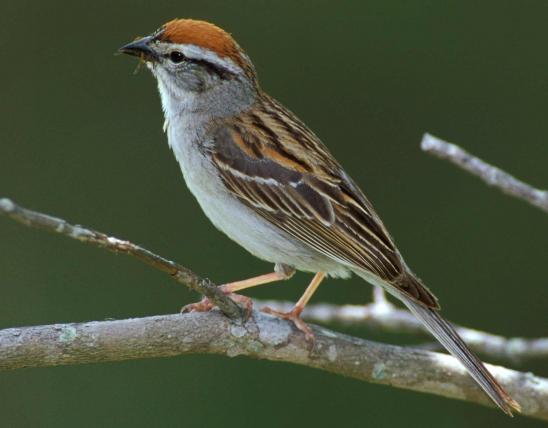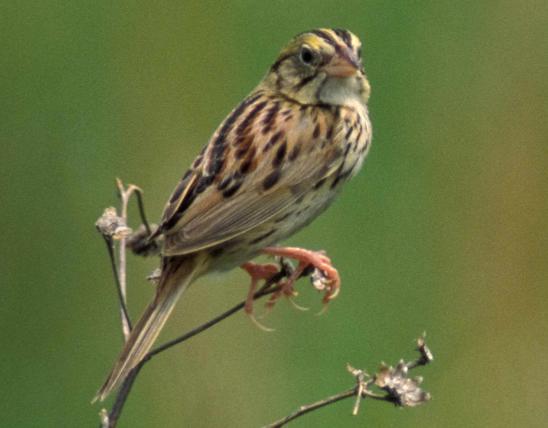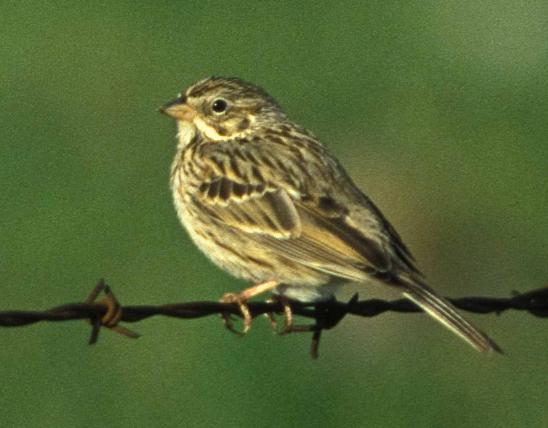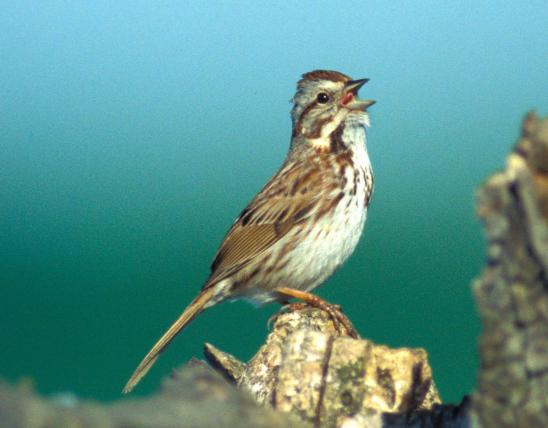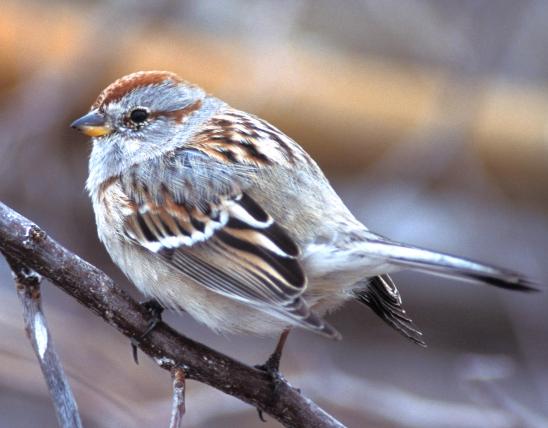
Bachman's sparrow is a large sparrow with a large bill. Adult upperparts are heavily streaked with reddish brown, with a thin reddish line behind the eye. Bill is dark gray above with lighter gray below; the head is flat and in line with the bill, giving it a flat-headed profile. Underparts are light buff colored. The tail is long, brown, and rounded at the tip. Juveniles are streaked below and have a distinct light-colored eye ring. The song begins with several loud, clear whistles followed by an evenly spaced, slow trill, often with metallic overtones: zeee zeee tew tew tew tew tew tew. This sparrow is more reddish in Missouri — the northwestern part of the range — and grayer and darker to the south and east.
Length: 6 inches (tip of bill to tip of tail).

In Missouri, which is at the northwestern edge of this species' range, Bachman's sparrows occur in a few Ozark-area counties.
Habitat and Conservation
Grassy and shrubby glades, old fields, and new pastures in recently cleared forest with a scattered regrowth of trees. Formerly in open pine-oak savannas. In general, areas with scattered, scrubby vegetation and a dense herbaceous understory. State and federal agencies are monitoring this species and managing public glades to stimulate regeneration of the grassy understory.
Food
Bachman's sparrows forage on the ground for seeds of herbaceous plants and pines and for insects.
Status
Rare summer resident. Endangered in the state of Missouri; a species of conservation concern.
The primary range is in the southeastern United States. In the early 1900s, there was an upswing in brushy habitat in the United States, as previously cleared forests gradually became wooded again. This sparrow's range increased northward during that time; but those areas eventually became more completely forested, and the scrubby, brushy areas this species requires have decreased. Restoring habitat is an important part of stopping this species' decline.
Life Cycle
Bachman's sparrows arrive in Missouri in early April. They build their nests on the ground against or under a grass tuft or low shrub. Females lay 3-5 eggs from April through July, with 2-3 broods per year. The female incubates the eggs for 12 to 14 days. Both parents care for the young. Young leave the nest in 10 days, when still unable to fly.
Control
Human Connections
John James Audubon named this sparrow after his friend and collaborator John Bachman, a Lutheran minister and naturalist residing in Charleston, South Carolina. Audubon's two sons married Bachman's daughters, and Bachman's sister-in-law Maria Martin helped draw details on Audubon's illustrations. Bachman himself wrote the text for Audubon's enormous book on mammals.
Ecosystem Connections
This species, famous for living in mature, open pine forests, was for many years called the pine woods sparrow, and old bird manuals have it under that name. That habitat was logged and has mostly vanished. The red-cockaded woodpecker, another declining species, is adapted to the same open pine habitat. Restoring that habitat will help both species recover.




About 350 species of birds are likely to be seen in Missouri, though nearly 400 have been recorded within our borders. Most people know a bird when they see one — it has feathers, wings, and a bill. Birds are warm-blooded, and most species can fly. Many migrate hundreds or thousands of miles. Birds lay hard-shelled eggs (often in a nest), and the parents care for the young. Many communicate with songs and calls.






















